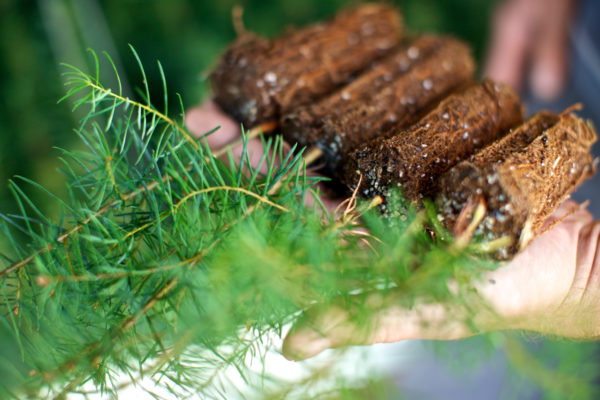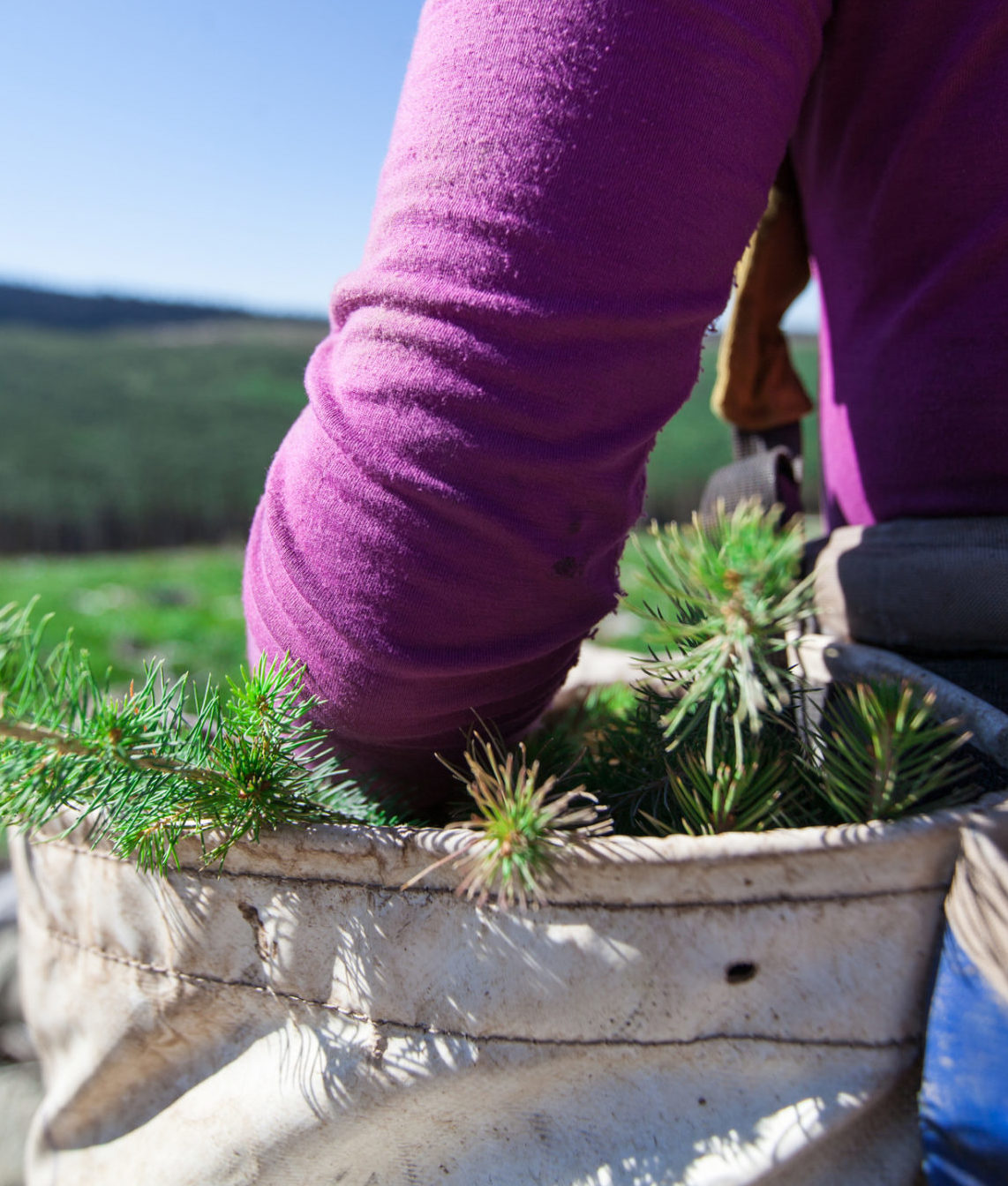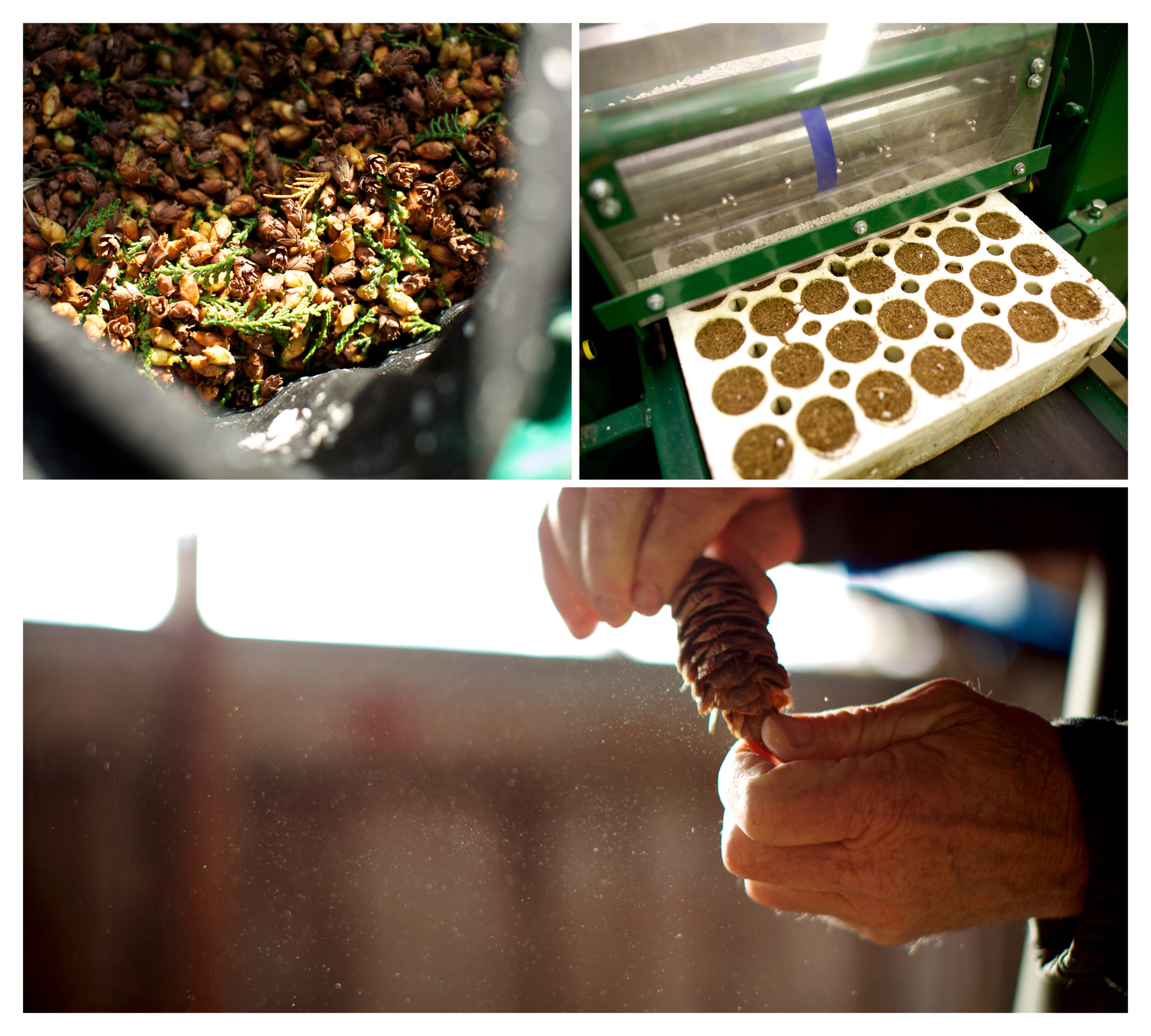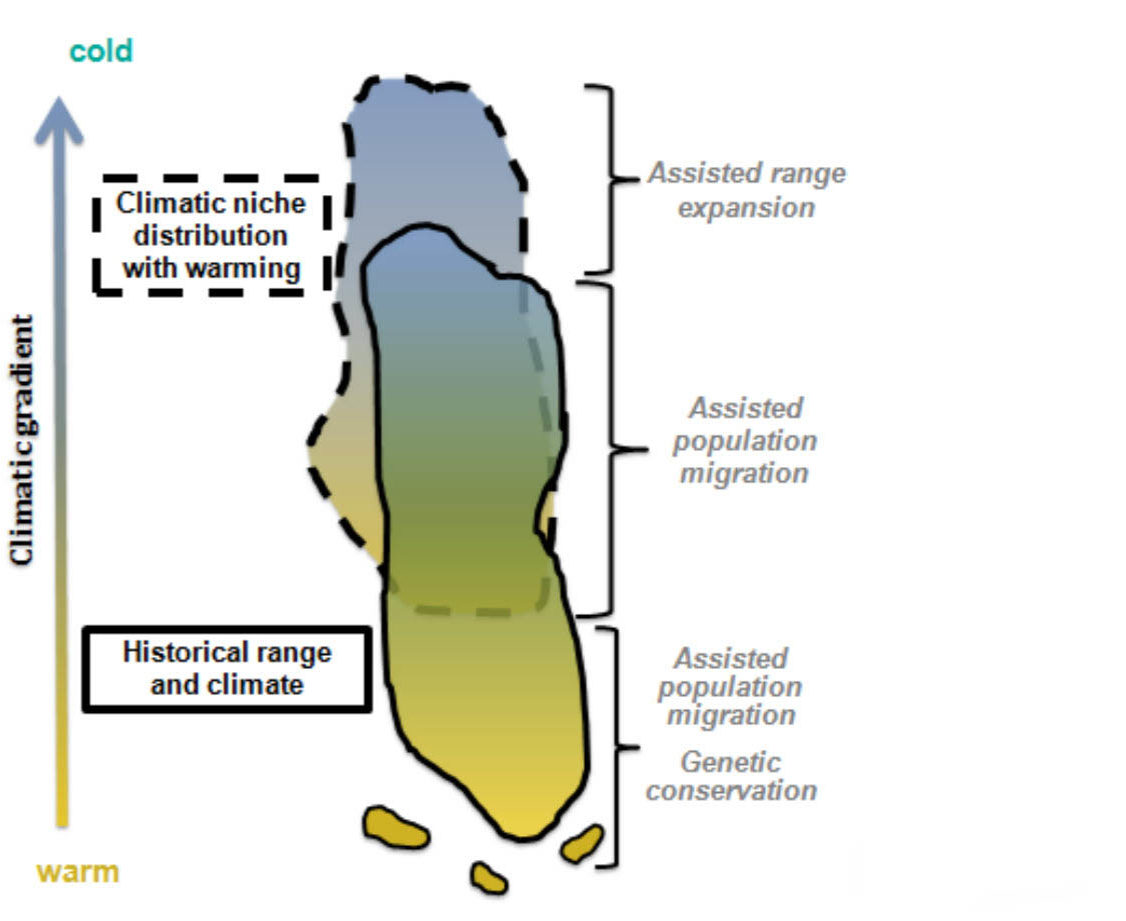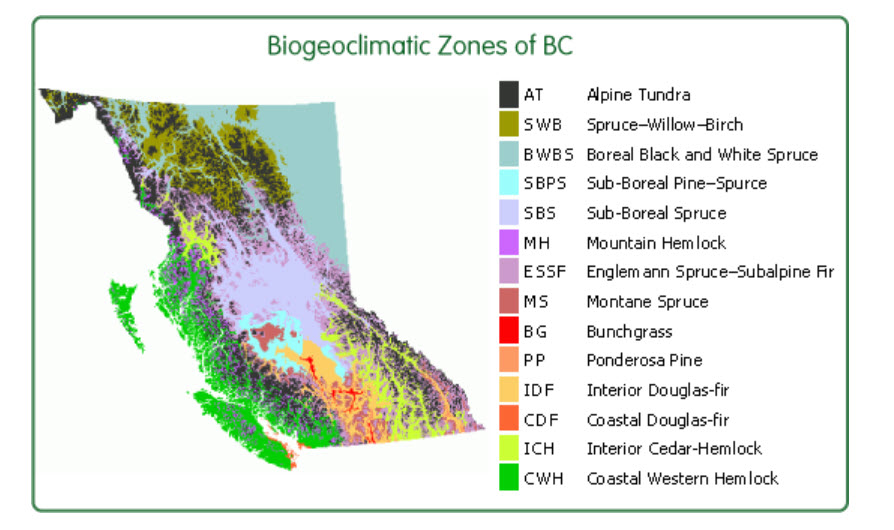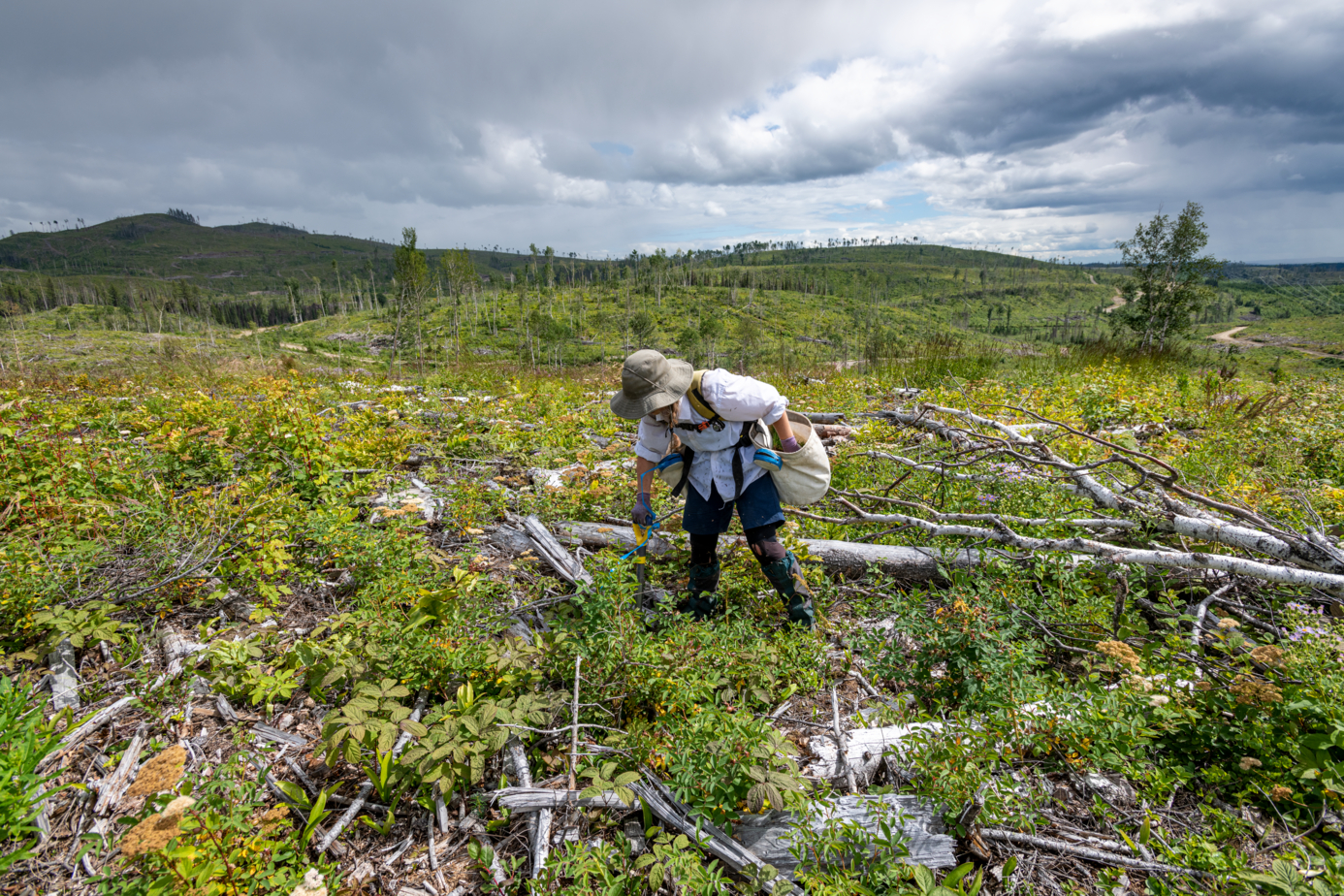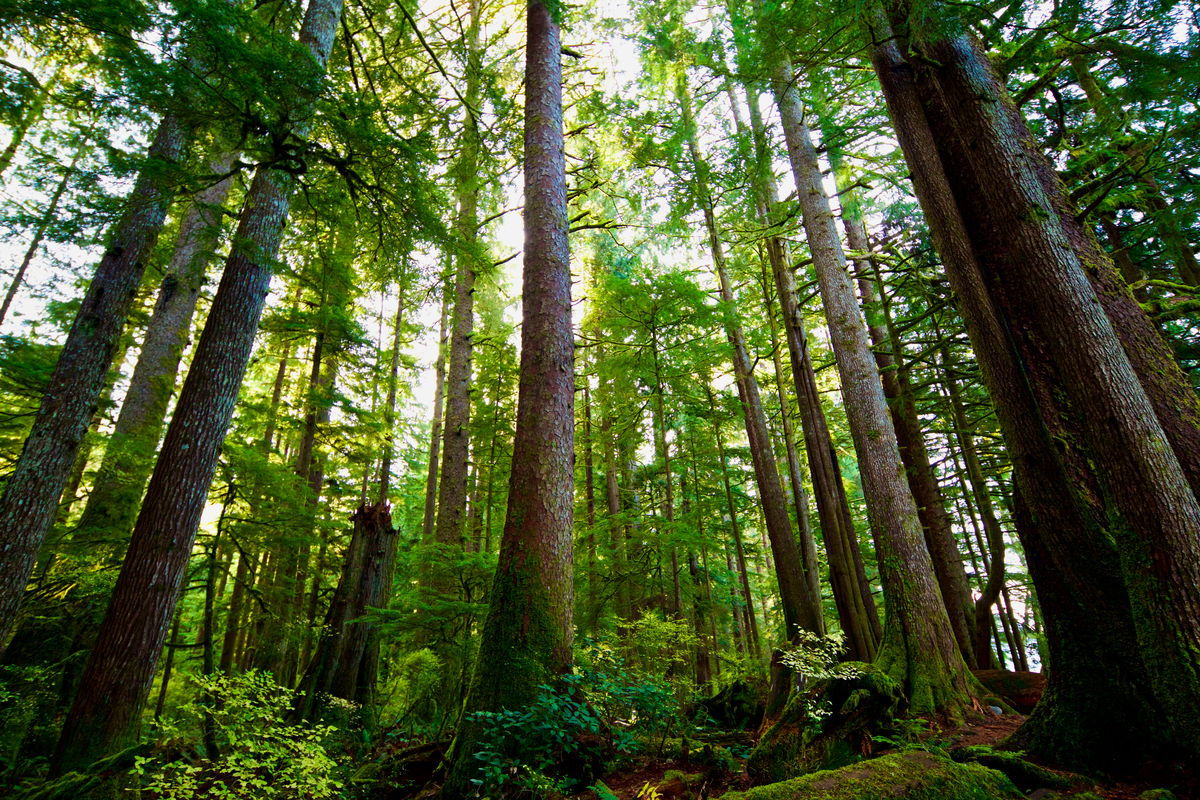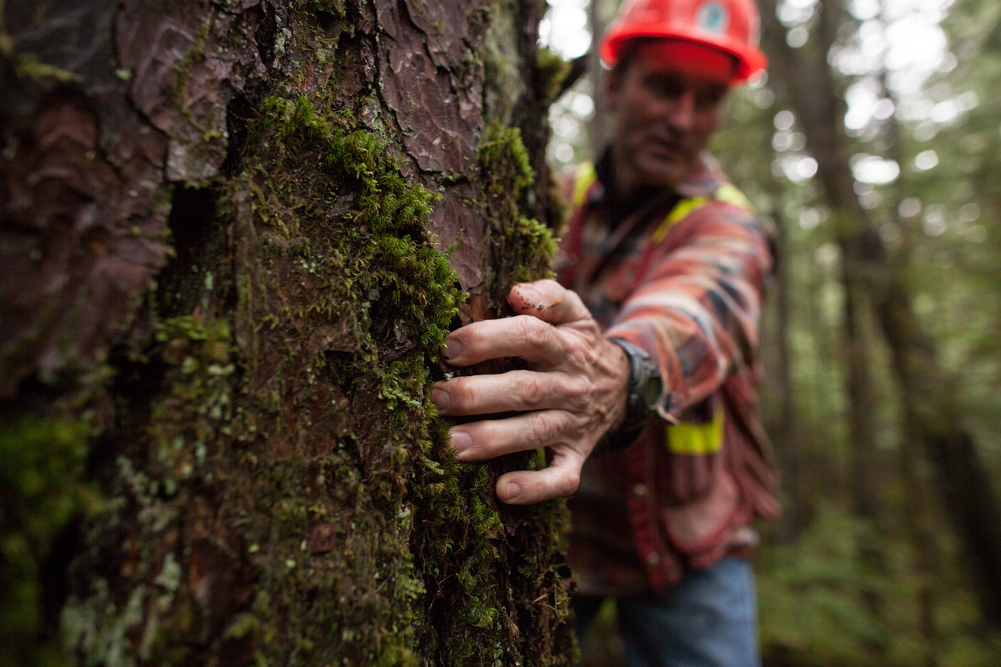A day in the life
Tree planting offers an opportunity to give back
Simone Rochon has worked as a tree planter for eight years. To her, this physically and mentally challenging work is a way to contribute to sustainability by restoring forest areas that have been harvested. “Tree planting provides the opportunity to work outside and give back to the environment,” she says. “I’ve had the chance to visit some trees I planted years ago, and it is nice to be able to see them growing and doing well.”
The terrain on today’s planting site in Vancouver Island is quite steep, meaning the tree planting rate will be lower than days spent planting on easier ground. Still, even on challenging terrain, an experienced tree planter can plant 1,000 trees per day, or more. “Tree planters can do well financially, working part of the year with time in the off-season for other projects,” Rochon shares. “The most challenging part is pushing through mental barriers, but overall, I would absolutely recommend tree planting as a career.”
Her day starts as she loads up her tree bag with seedlings, but the journey for those small trees has been a long one, touched by numerous specialists and agencies focused on ensuring the sustainability and health of regenerated forests in B.C.
Photo credit: Brudder Productions
